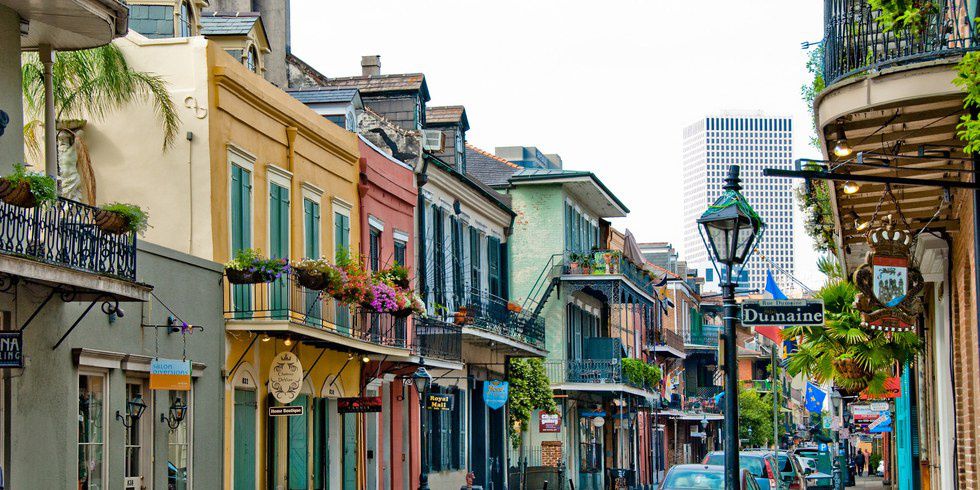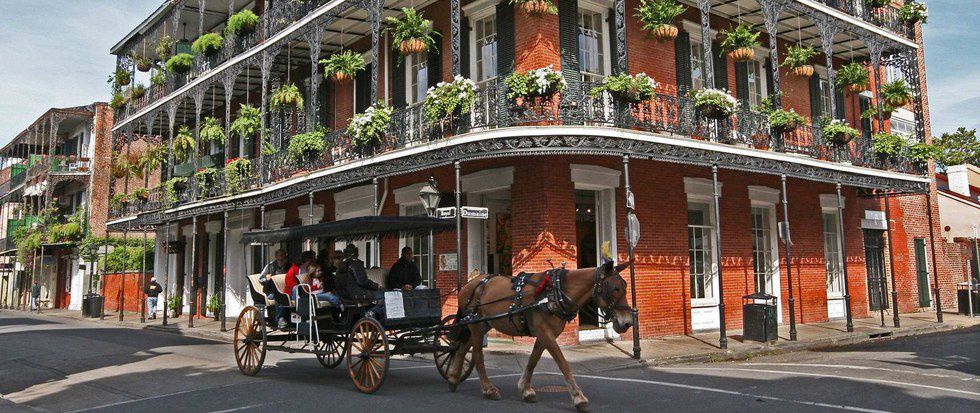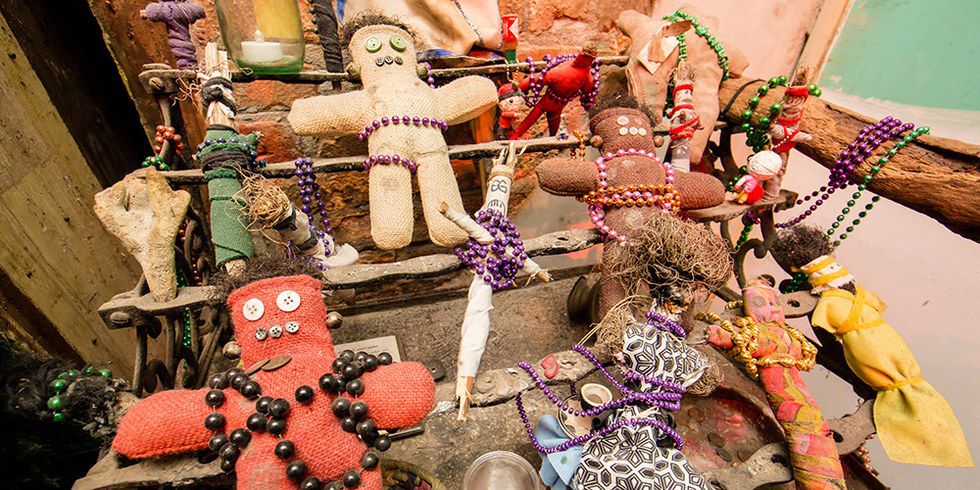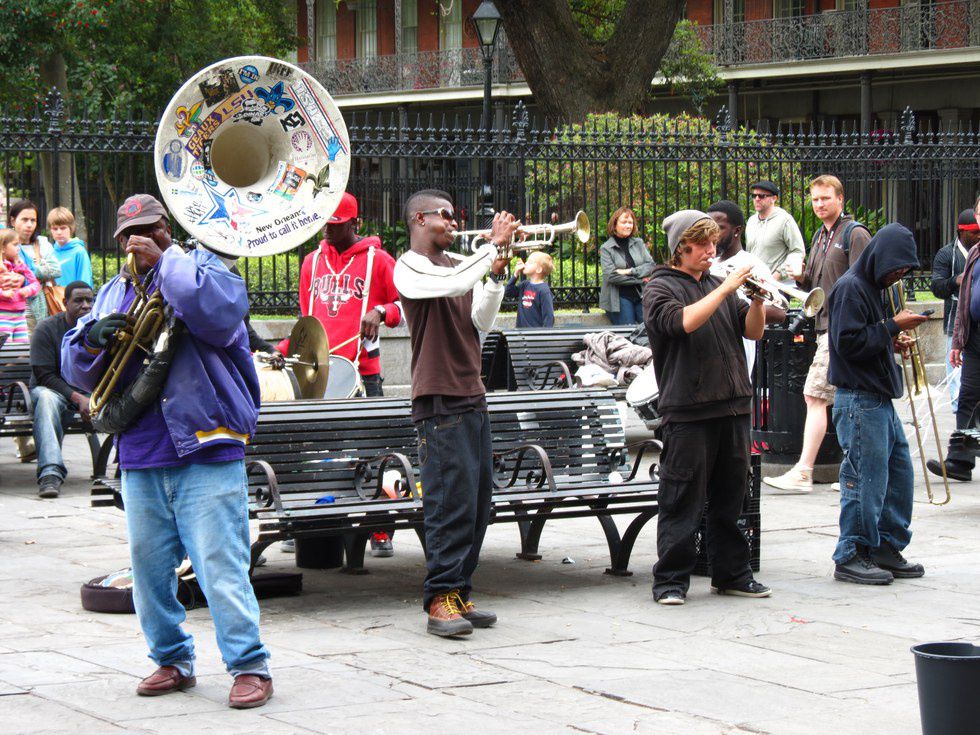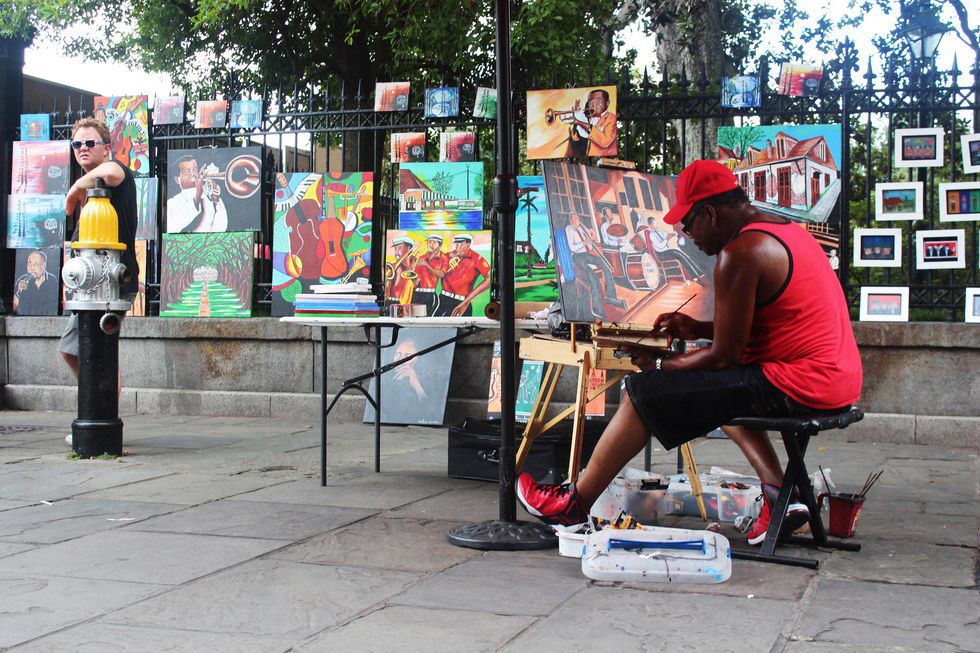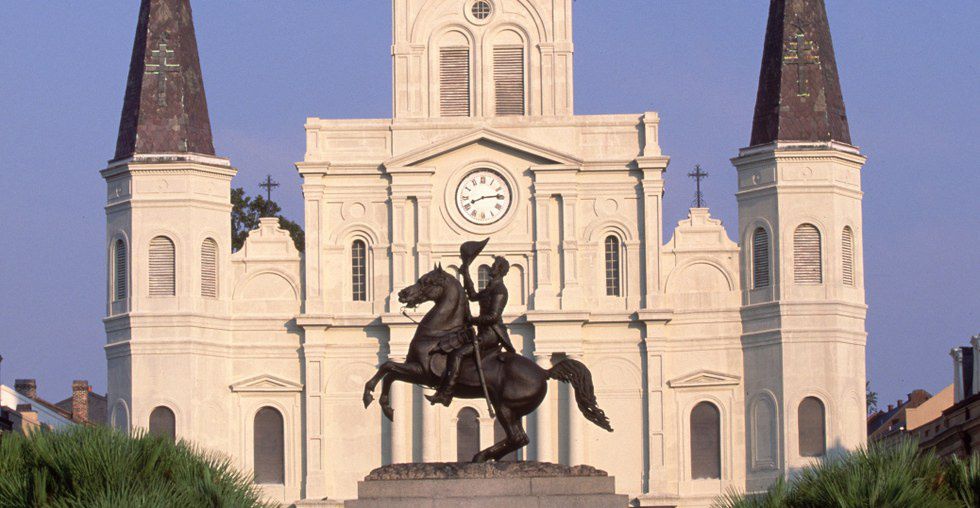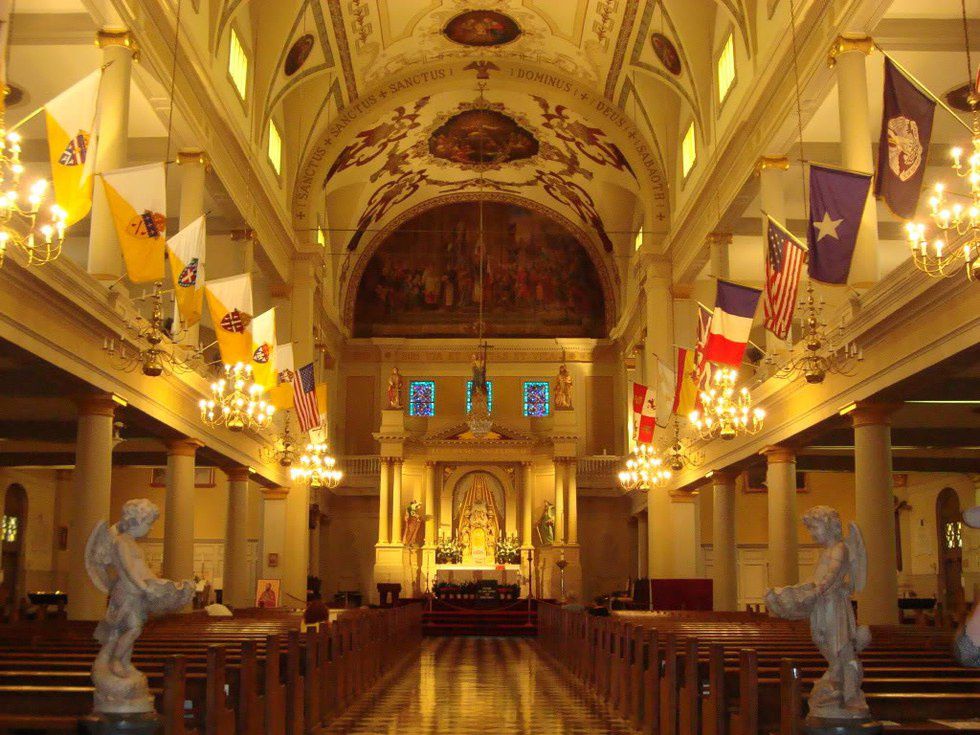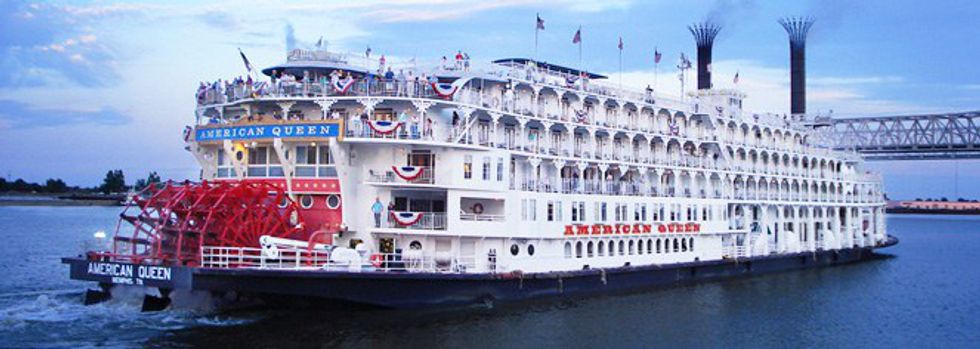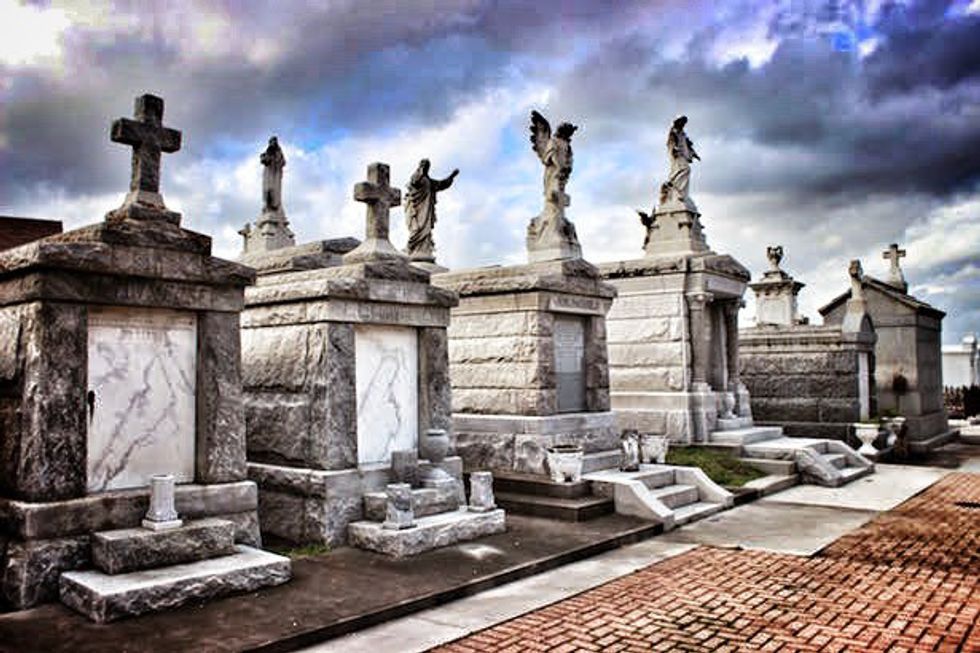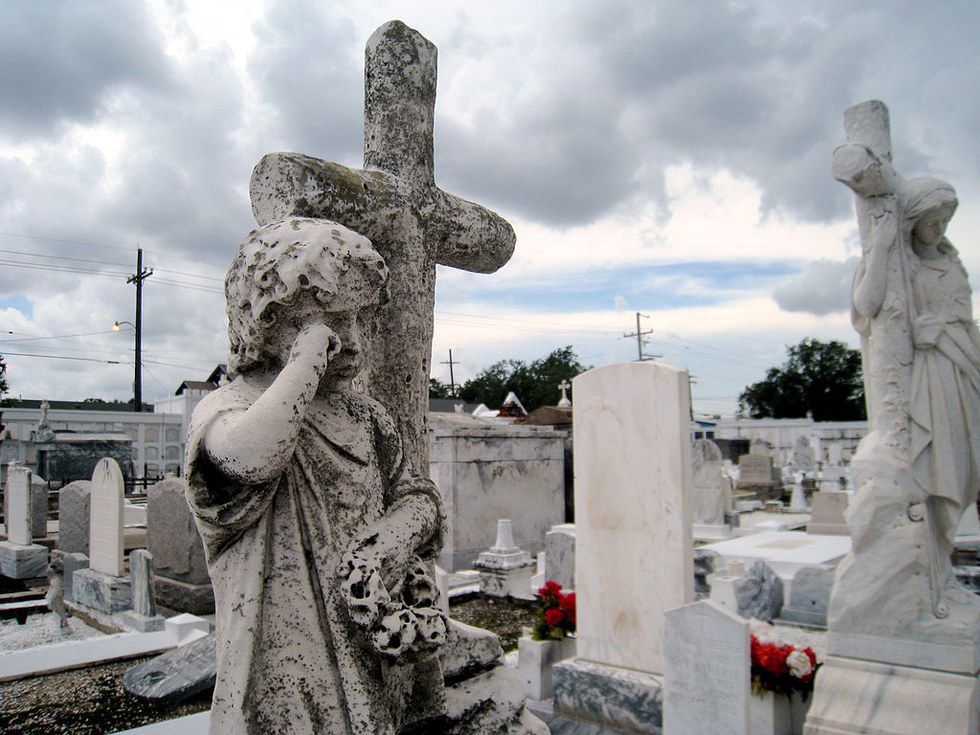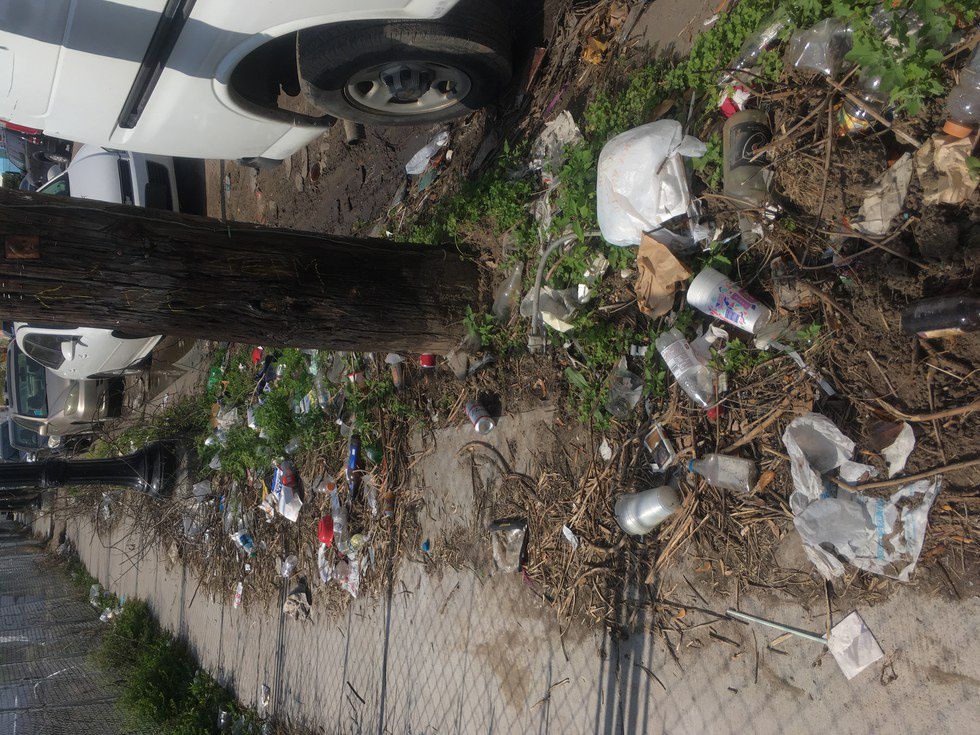We went to New Orleans for our day-off after doing volunteer work for Habitat for Humanity. At first I thought New Orleans was similar and boring to big cities like Washington DC, Sydney, Melbourne, etc. I was wrong. New Orleans is totally different.
The first images of colorful, small but deep houses first caught my attention. New Orleans feels like a different world at very first sight.
The cultural features on the surface of this city are very eye-catching. The bright colors and complicate decorations on buildings, the masks, horse carriages, Voodoo shops, Catholic symbols, art performance on streets, crawfish dishes, sex and smoke/drink symbols etc
One highlight of New Orleans is the St. Louis Cathedral, the oldest cathedral in the United States. It is open for public sightseeing, luckily. When I walked inside, there was a mass in the other room, and I could hear the holy singing.
Running through New Orleans is the Mississippi River. The city used to be an important port for the flow of aid and supplies on this river in the history, especially during wars, such as the American Revolution or the War of 1812.
New Orleans was originally a French city. It was given to Spain in 1763 in the Treaty of Paris until 1803 when it was given back to France and quickly turned to the United States in the Louisiana Purchase. The city later received thousands of immigrants. New Orleans was also a big city of slaves who worked on sugar and cotton plantation outside the city. As a result, New Orleans features a dynamics of different cultures of the American, French, Creoles, African, Irish, German, Italian, etc.
We then walked down to the Cemeteries 1 and 2. Since the city is below the sea level and burial is impossible, cemeteries emerged as substitutes and have then been a very distinctive characteristics of New Orleans. Christianity has deep influence on the construction of the cemeteries.
While New Orleans is a fascinating city, it is also ridiculously expensive. Almost everything is charged with high fees that simply are not worthwhile. The Cemetery 1, where most of the old and most impressive constructions locate, now charges 20$/person to go inside (It was free until 2015). The Cemetery 2, despite also holy and free, is not as significant at all. The city also holds tours with 15-20$/person.
There are many museums but most of them cost some money. The Museum of Death, which charges $15 per person, shows many cases of death of all types. The museum is quite small collects many random cases together, in my opinion. It seems that its main purpose is to scare people. It was fun, but it was not worth $15. The Voodoo shops sell many ridiculously expensive stuff, such as a tiny painted stone for 97 cents, or a pencil with a ribbon made of maybe-Voodoo-style piece of cloth for more than $2.
I love the constant music and art performance on the streets and in restaurants, but it is a hassle that I am constantly expected to pay money. There was a performing man who gave me his performing gun and refused to take it back unless I took a photo with him and gave him money. I was stupid to take the gun in the first place, but it was annoying that even when I politely declined to be a part of the 'performance,' I was still forced into it.
New Orleans also has the dirty sides. There are parts inside the city that has trash on the streets, and there are parts that constantly give horrible odor.
In a nutshell, New Orleans is definitely a must-see city for its historical and cultural significance. One day is not enough to understand the whole city but absolutely gives a sense of impression. I wish I had more time to spend on the Voodoo Museum, the State Museum, the Cabildo, and other shops/museums of fashion.




